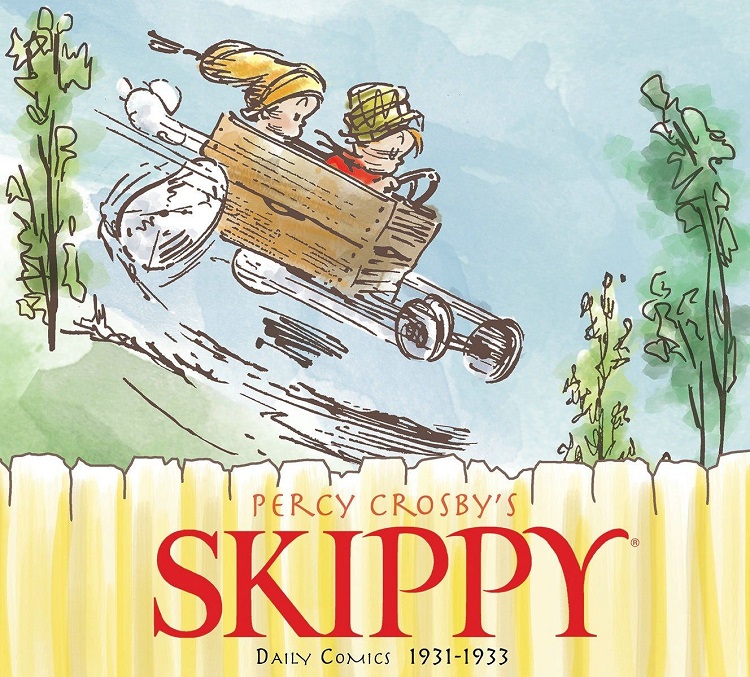
Skippy was created by Percy Crosby and ran from 1923 to 1945. In its time it was hugely popular, highly acclaimed, and adapted into movies, novels, radio shows, and even got its very own postage stamp. Crosby got fabulously rich off of syndication rights and merchandise (though Skippy peanut butter never paid him a dime even though they completely ripped off the name and his art work). They say he made more money than the President of the United States in his prime, which was apparently a popular metric at the time.
The comic is widely considered one of the early greats and influenced artists such as Charles Schulz and Bill Watterson (though Watterson claims to have never read Skippy, the similarities are uncanny), Sadly, Crosby got more and more conservative in his politics and let this slip more and more into the comic. This caused the comic’s popularity to wane and eventually it was dropped from the newspapers completely. Crosby’s alcoholism grew and he was committed to a psychiatric hospital in 1948, was diagnosed with paranoid schizophrenia a year later, and spent the rest of his life institutionalized.
Sadder still is how his art has now mostly been forgotten. I have to admit I’d never heard of Skippy until I received this book. With thanks to the Library of American Comics all of Crosby’s Skippy cartoons are being collected, documented, and well restored. This volume represents the height of the comic’s popularity and the beginning of Crosby mixing politics into the cartoon, but before it began to overwhelm it.
Reading through these pages, I’m amazed Skippy is not a household name. The daily strips range from hilariously funny to manically zany, from sweetly melancholic to topically political. Crosby draws in a sloppy, scribbled sort of way but it works really well. His panels are often filled with action and his lines give you a feel of constant movement (and like Calvin and Hobbes, his characters often get philosophical while speeding dangerously to a certain doom).
His politics stay mostly generic, which avoids the need for modern readers to keep Wikipedia open digging for understanding of arcane references. There are digs at Congress and lots of references to the Depression, all of which seems strangely prescient over 80 years later. It certainly is dated when it comes to the technology being used and the style of the characters, but it still manages to feel fresh.
Like any long-lasting comic strip, some of the jokes fall flat and there are more than a few I just didn’t get, but for the most part I sat mesmerized taking in page after page of glorious brilliance. There is a hallucinating quality to many of the strips. They are bizarre, modern, and absurd. The jokes often took me by surprise with their surrealism. The typical setup and payoff of your average comic strip is often thrown out in order to present something more off-kilter, strange, and brilliant.
As per usual with the Library of American Comics collections, this book is a beautifully laid out hardback, meticulously packaged, and wonderfully made. Besides every strip written between the years of 1931-1933, it also includes photographs and rare artwork from Crosby’s daughter plus a long biography of his life during these years.
It is tragic that Percy Crosby’s Skippy comic strip has been largely forgotten by the populace. It is a wonderful piece of work that should be read and treasured by anyone with even a passing interest in comics. This collection does a fantastic job of preserving the strips and will hopefully lead to a resurgence in the strip.